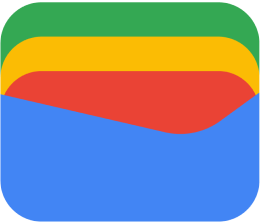
Samsung Wallet boarding pass UX

Case study overview
Summary:
As a UX designer, I played a key role in the successful launch of Samsung's multi screen foldable device at the 2022 Galaxy Unpack event for the North America market.
My contributions were particularly focused on the Samsung Wallet, with an emphasis on enhancing the user experience of the boarding pass feature on foldable devices.
Responsibility:
Collaborate with internal and external partners to advocate for the North American Samsung device users.
Role:
UX Designer
Timeline:
8 months design and refining
My role as the Samsung UX designer for the US
Collaborative champion:
partnering with not only internal but external stakeholder to able to launch Samsung device tailored specifically for US market users.
Visionary advocacy:
Visionary advocacy for the US users and be able to translate US specific designs to HQ in South Korea.
Impactful outcomes:
Through powerful collaborations and user first focused designs; I was able to have impactful outcome in launching significant flagship devices in the US.


What is Samsung Wallet?
Samsung Wallet seamlessly integrates mobile payments, travel check-ins, digital ticketing, and secure electronic keys into compatible Samsung devices, transforming everyday experiences for millions of users worldwide.
Project overview
Implement design with strong data driven design to help Samsung launch multi display boarding pass experience in Samsung Wallet for North American users.
Understanding the foldable mobile market
Before getting into design I want to set background on foldable device market.
While some may still see foldable phones as a novelty that really depends by the region.
In South Korea 1 in 10 smartphone users use or used the foldable device.
And with Samsung leading the foldable market globally, capturing over half the market.
You can see how south Korean users might be already adapting to the technology.
North America, it is still in the early adoption in the market,
This also presents a massive opportunity for growth.
And that is why as a UX designer I wanted to make sure the US users have great first impression.


Extensive UXR on foldables
And because US market show that many users are not too familiar with foldable interactions;
I partnered with researchers on extensive user research to help Samsung Korea understand how US users experience designs differently.

This is one of the research, after a user tokenized the boarding pass into Samsung Wallet,
I wanted to understand how US user interact with multi display flip device to complete the boarding pass journey.
With given HQ design, after tokenizing user simply had to flip the device open for single navigational UX guiding them to their final boarding pass journey.
But this is was not so simple for US users especially when it was their first time interacting with duo display mobile devices.

In South Korea, 75% users continued their journey by flipping the device open.
And only 1-2 additional taps to try to find more information.
5 % users found frustrated and confused about the interaction and ended the user journey.

UXR results by region
While in the US 45% user ended their journey from the front display.
With 3~6 additional taps.
And 50% US users expressing frustration wanting to continue the user journey only in the front display.

Questions to spark design
1. How can we make the next steps crystal clear?
2. How can we use intuitive interactions, like tapping, to provide instant feedback and guidance?
3. How can we leverage data to continually refine and improve the user experience?
Proactive UI solution
To challenge the current design from the HQ I presented Proactive UI solution.
Providing a direct string and by anticipating user needs and guiding them seamlessly with a proactive UI,
I hoped to remove frustration and guide to faster adoption and higher engagement with duo display device.
Which I believe will lead to user loyalty and drive long term value to US foldable users.


With a proactive UI and with data that was provided by HQ
I was able to understand the both users from South Korea and the US.
This helped me to design an experience to create similar behavior.
Noticing from the data of user wanting to tap to find more information on boarding pass on front display.
I also suggested an additional implementation on the flow.
This suggestion for improved UI terminology and extra screen flow was met with enthusiasm from HQ.
Data backed design improvement
Now with new design usability testing showed great impact.
From 45% user journey continuation to 80%
3~6 additional tapping to 1~2 tapping
And decreasing user frustration level from 50% to 15%

Design impact
Impactful and rewarding outcome
With data driven design change I was able to bring great impact to US users.
Power of understanding the North American market and tailoring design by research to their specific needs to impact globally.
I wanted to not just fix a problem, but create an experience that sets the stage for a long and happy relationship between our US users with their Samsung devices.